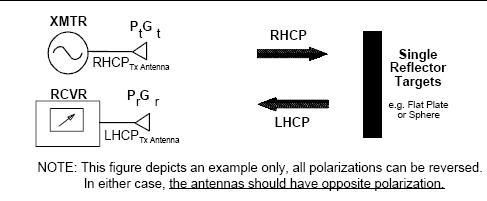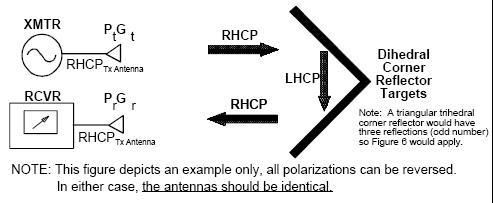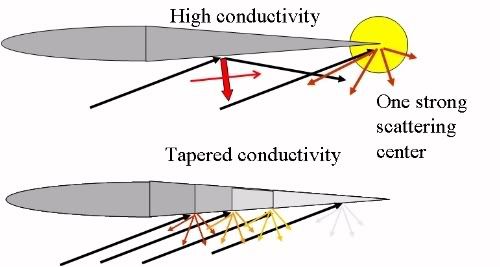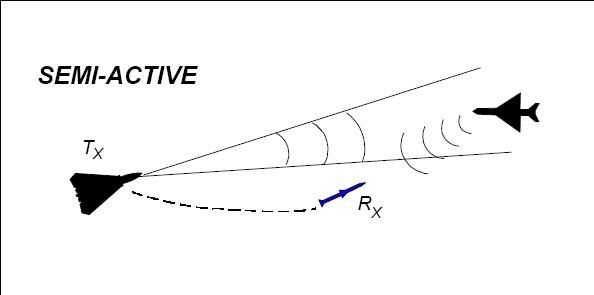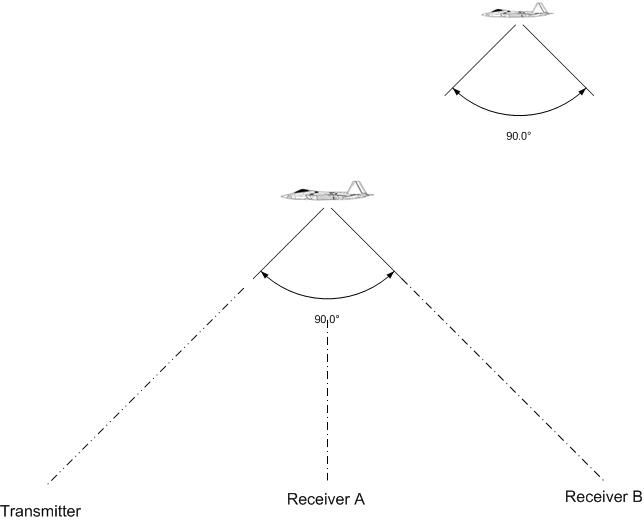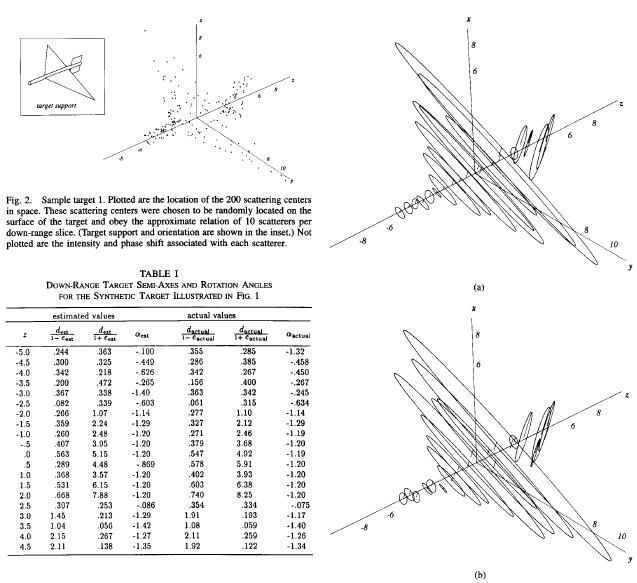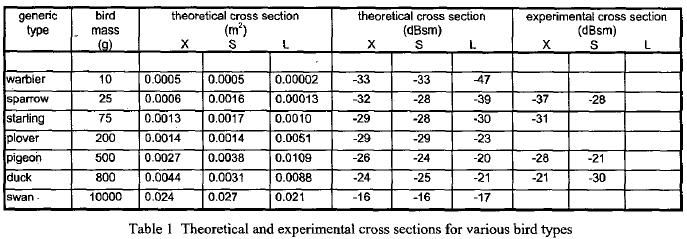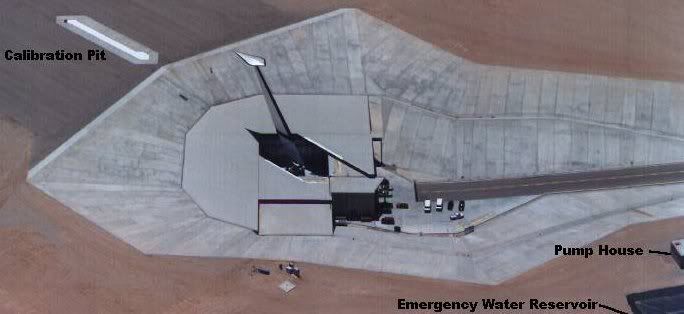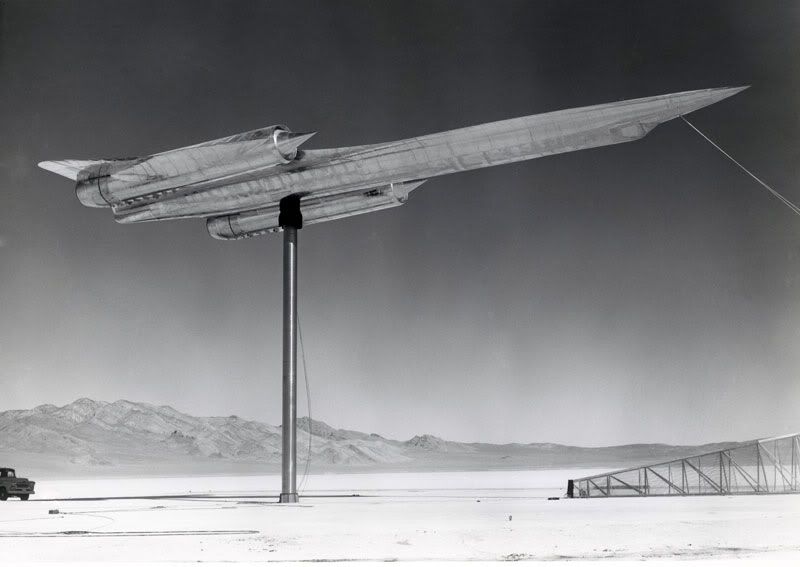what do you think about
forward scattering radars? How effective are they compared to the other bistatic modes.
The area inside the oval is the area where the plane can be detected(but not tracked).
Forward scatter radar (FSR) is more of a technique than a distinct system, although the elements in a bi-static configuration must be physically deployed in a certain manner to take advantage of the diffraction effect.
Here is why...
Upon impacting a complex body, the wave exhibit four distinct behaviors:
1- Reflection
2- Deflection
3- Creeping
4- Diffraction
Notice I said 'complex body'. Do not confuse symmetry with regularity. Look at your face in the mirror. Your face is symmetrical (I hope) and certainly very handsome. But your eyes, nose, lips, cheekbones and ears are irregular features. They appear nowhere else on each side of your face. An aircraft is symmetrical but like your face -- irregular in its features. A complex body have multiple scattering points as the body itself is one large scattering point. If we record a scattering point's energy level rise and fall over time and plot them out, an aircraft would look something like this...
The radar computer processes all these scattering points, sums and difference them up and display the final result on the scope as a single point of light. The mess as plotted is a profile that we instructed the computer that:
-
IF there is X amount of energy states in a cluster
...And...
-
IF each point is a certain level over the clutter (junk) threshold
Then consider this cluster a valid 'target'. Those many scattering points come from
reflection and
deflection off the irregular features. The
creeping wave effect contribute to lesser intensity. Even the highly angular F-117 has some curvatures somewhere unseen.
Forward scattering detection is about picking up a portion of the radar wave that managed to 'go around' (diffraction) the body.
Radar Basics
A radio wave that meets an obstacle has a natural tendency to bend around the obstacle as illustrated in the figure. The bending, called diffraction, results in a change of direction of part of the wave energy from the normal line-of-sight path.
This change makes it possible to receive energy around the edges of an obstacle or at some distances below the highest point of an obstruction. Although diffracted rf energy usually is weak, it can still be detected by a suitable receiver. The principal effect of diffraction extends the radio range beyond the visible horizon.
The above source very well illustrate diffraction as how it can be exploited in radar detection. You can imagine that 'obstacle' to be the vertical stab, the cockpit bubble, the missile or the small communication antenna. A portion of the impinging wave will exhibit the diffraction behavior on each of these irregular feature. You can also imagine that 'obstacle' to be the entire complex body, aka aircraft, itself. All diffraction points on the aircraft contribute to the overall diffraction behavior on the aircraft itself.
So now we have reflected energy, deflected energy, creeping wave energy and diffracted energy. In theory, all should equal to the original amount that impacted the aircraft, minus atmospheric induced loss during travel, of course. For simplicity's sake, I will classify reflected energy, deflected energy and creeping wave energy as 'absorbed energy'. They are 'absorbed' in the sense that a body is interfering with the wave's travel.
Babinet's Principle has...
Babinet's principle - Wikipedia, the free encyclopedia
In physics, Babinet's principle is a theorem concerning diffraction that states that the diffraction pattern from an opaque body is identical to that from a hole of the same size and shape except for the overall forward beam intensity.
Basically, for forward scattering detection, the fancy explanation above means the amount of absorbed energy equals to the amount of diffracted energy. Sum them together and we have the total amount that impacted the body. The reasoning was that since it is difficult to detect the absorbed type energy, why not use the bi-static configuration to pick up the portion of the original wave that was not so absorbed? Forward scattering detection was not invented because of 'stealth' aircrafts. Rather the technique was adopted out of military necessity.
But the diffraction also imposed limitations on this detection technique.
Gruppo Atmosfera Media e Meteore: Forward-scatter radar system
The above source is for meteor detection using forward scattering detection technique but is applicable to aircrafts as well. In that illustration, Bologna is the transmitter, Modra and Lecce are receivers. Each station is a dedicated platform, meaning Bologna can only transmit, not receive. Same restrictions for the other two stations in their functions. The oval areas are where forward scattering detection techniques can pick up the diffraction energy. That does not mean the receiver cannot process deflected energy. It can process both as both behaviors occurs at the same time. This is why I said forward scattering detection is more technique than an actual system as we can have Modra and Lecce process only deflected energy. Anytime the transmitter and receiver faces each other, the moment a target come directly between them, it does not matter which direction is the transmission, a potential for forward scattering detection exist, but I could be totally ignorant of the diffraction behavior to exploit it.
In your illustration, the detectability area is that oval shape 'fence'. In the meteor detection source above, they drew that detectability area slightly different but it is the same idea as yours. This 'fence' area exist because of the behavior of the wave
AFTER leaving the body and its energy level state. Frequency and transmission power level directly influence the size of this detectability area. That is why I used that meteor detection source to illustrate forward scattering detection. They used meters long wavelengths (mhz) over several hundreds km in distance and the size of the detectability area is indicative of this relationship. Outside of the fence and target ambiguity increases as long as you are in forward scattering detection mode. Or let me put it this way: As the target travel inside the fence, and as it approaches the electronic boundaries of this fence, the
LEVEL OF CERTAINTY that the target exist decreases -- target ambiguity. Remember that radar detection stands upon a statistical foundation. Once the target is outside of that statistical limit for forward scattering detection technique, what remain viable is deflected energy detection technique. Forward scattering detection has superior target certainty over standard bi-static detection but at the expense of effective coverage area even though they share the same physical configuration.
So far I touched only on basic target detection. Other can of worms are Doppler resolution, the dead zone, equipment stability and many more.
Sir, What is the probability of a monostatic radar being able to detect a LO compared to a AWACS considering they are both using the same radar at the same power and the target is flying at 10000ft?
Not sure what are you trying to get at here, but an AWACS generally operate as a mono-static platform. If you wonder if there are any advantages of an airborne platform over a ground station, in terms of target certainty of an LO aircraft, then there is a slight advantage for the airborne platform in that radar detection is line-of-sight dependent. The higher you are the further you can see. If there is a credible threat of an attack by a flight of LO aircrafts, an AWACS can use long wavelengths (mhz) with being at higher altitude to attempt detection.
Aren't the specular reflections enough for detection?(Consider bistatic and not monostatic).
Yes...And it does not matter the method employed. But there is something called 'clutter', which is unwanted signals, or junk. That said...What is junk to one system is desirable to another. For an AWACS, land mass and clouds are junk. But for a weather radar, the AWACS aircraft itself is junk. The meteorologist want to see only nature-made objects, not metallic ones flying around. The universe is filled with background radiation and that must be included in the clutter region. Specular energy can fall into the clutter region and be dismissed by the radar computer. But how do you know if that particular dismissal was a real bird or an F-22?
Lower the clutter rejection threshold and your scope would be filled with all sorts of signals, from clouds to birds to land and somewhere inside that mess would be that F-22. You could attempt some creative signal processing such as Doppler to filter out anything moving at above so-and-so speed, but then how do you know if what you believed to traveled at several hundreds km/h is not a sudden appearance of a different flock of birds? By the way, we detect birds
BY THEIR BEAKS. A bird's body is naturally curvy, remember the creeping wave effect, and the feathers do absorb some freqs. The beak is hard and angular and is the greatest contributor to the bird's RCS. So pelicans with their giant honkers can appear to be several times their individual sizes.
For the X, S and L bands, the F-22 is between the sparrow and the warbler. Unofficially it is even smaller but no one will reveal the true figure. People are misinformed that if a missile's X-band pick up a bird's RCS, it should be able to target a 'stealth' aircraft as well. This belief is true only if missiles will turn and chase birds. But we do not program our missiles to chase birds. No one does. We program our missiles, even though their X-band radars is capable, to ignore any RCS below a certain threshold, else the missile would be chasing everything and anything.
The US never claimed our 'stealth' aircrafts to be 'invisible' at any time. If the media decide to use the word 'invisible' we will not make any noise about it. The intention is to insert the B-2, F-117, F-22 and F-35 into the clutter region for as long as possible and let the enemy figure out what to do next while we travel at several hundreds km/h to drop bombs on his head. The American saying 'wild goose chase' is very applicable here.
Ok. So, bistatic and multistatic radars have that limitation. Nevertheless, it gives us the ability to track a LO aircraft within our territory. Gives a target to shoot back rather than have some thing invisible shoot us and leave.
Much misinformation have been made about the single F-117 shoot down over Yugoslavia. The Serbs and the Russians wasted no efforts on crowing how their 1960s era radar supposedly detected, tracked and finally targeted that one F-117. There was some nonsense about long wavelengths to 'defeat' LO aircrafts.
Utter BS.
Over Yugoslavia, NATO flew about 20,000 sorties with about 4,500 Suppression of Enemy Air Defense (SEAD) missions. The SEAD missions were low altitude to entice ground missileers. So out of 20,000 flights, only one F-16 and one F-117 shot down? I would be embarrassed at that kind of combat record. If long wavelengths can defeat US 'stealth' aircrafts, then it stands to reason that whatever was so effective against the F-117, it should be ten times more effective against 'non-stealth' aicrafts, correct? Plus the US had about 60 B-2 missions from Whiteman AFB to Yugoslavia and back to continental US. But only one F-16 and one F-117 shot down?
So here is the truth about Yugoslavia and the F-117...
Over Yugoslavia, NATO operated under very restrictive flight rules. The F-117 sorties ingressed the 'hot areas' at the same time and altitude just about clockwork. There were plenty of Serb sympathizers that had Aviano AB in Italy under 24/7 surveillance. Serb military command received alerts as to when Aviano launched anything in the air. Over time, Zoltan Dani, the famous Serb missile battery commander, figured out the most likely time something would be over his coverage territory. Contrary to myth, Dani did not know about wavelengths behavior on a body. He just used whatever freqs there were on his equipments. That long wavelengths bit came out much later to enhance the myth.
So after a few weeks, Dani began to see a pattern of suspicious echoes on his radar. Nothing concrete but a pattern nonetheless. NATO's predictability assisted him. Dani set the fuses on his missiles to detonate at different altitudes and launch them at one such suspicious echo on that one day. The F-117 pilot, Dale Zelko, reported he had to dodge several missiles before he got caught in the shrapnels of one. What Zoltan Dani did was nothing spectacular -- spray and pray. The North Vietnamese did it enough back in the Vietnam War and most of US air losses in Viet Nam came from missiles, not air-air combat. Zoltan Dani declined to reveal how many missiles he launched in the direction of that suspicious echo that to his good fortune turned out to be an F-117. If it was a British Tornado would so much celebration resulted and a myth created? Probably not. Anyone who has any working knowledge of radar detection quickly dismissed Zoltan Dani as nothing more than a lucky opportunist.
Currently, to increase the odds of detection, not track or target, is to employ several methods against US 'stealth' aircrafts. The preferred method, at least on the ground anyway, is to deploy a bi-static system with forward scattering detection capability. Centralized controlled and data processing. All elements should be non-dedicated, meaning each radar station must be able to change between being a transmitter to being a receiver as needed. And a lot of missiles standing by.
An aircraft is a reusable weapon. Launch it and most likely it will return to be used again. Each time deployed it can deliver multiple types of ordnance, if that is the mission requirement. Unlike an aircraft, a missile is essentially a throwaway weapon. Each time a missile is used, the delivery vehicle and the ordnance is essentially discarded, often with the expectation of no success in its mission. The reason why missiles have a place in our defense system is they are more responsive than manned aircrafts, at the expense of intelligence and reusability. Missiles are less expensive and quicker to manufactured than manned aircrafts. As such, missiles are ideal in a defense network against US 'stealth' aircrafts -- under spray and pray tactic, of course.
The problem for the defenders is that US 'stealth' and 'non-stealth' aircrafts are equally lethal and there are no doctrinal and/or technical issues as to why we cannot use both at the same time against the same target. We demonstrated this coordinative capability with Desert Storm and with a now retired 'stealth' platform. Even if the defenders are aware of the immediate threats from both at that moment, they could still face destruction by one type as they are under pressure and distracted by the other type. Now we have two 'stealth' platforms that are more capable than the retired one and we have another 'stealth' platform on the way.
The US is also not resting on this laurel. This current generation of 'stealth' employ passive RCS reduction measures. We are working on the next generation which will have active RCS control measures. The difference between 'reduction' and 'control' is crucial. The aircraft will be able to emit any or no RCS at will. We will be able to claim with a straight face that the aircraft is 'invisible' to radar.
I know my response is long but you are treading into a very complex topic that require some compromises in explaining technical information involved in language that the average readers can understand.

